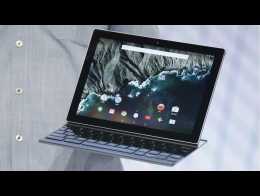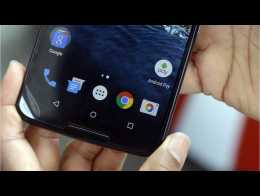
Contents
- 1 Google’s latest mobile operating system offers less than previous versions of Android. We look at the pros and cons of Android Go
- 1.1 What does Android Go look like?
- 1.2 How much space does Android Go take up?
- 1.3 So which Android Go apps are there?
- 1.4 Can I use Google Maps and Gmail on Android Go?
- 1.5 Can I play videos on Android Go?
- 1.6 But can I install other apps on Android Go?
- 1.7 How do I manage the amount of data I use?
- 1.8 And is Android Go secure?
- 1.9 So how do I get Android Go?
- 1.10 Is Android Go worth having?
- 1.11 What happened to Android One?
Google’s latest mobile operating system offers less than previous versions of Android. We look at the pros and cons of Android Go
Android Go – or, to give it its full name, Android Oreo (Go edition) – is a slimline operating system developed for entry-level smartphones. It’s based on Android 8, which was released last August, and is designed to make Google’s operating system run better on handsets with 1GB of memory or less. As such, Android Go doesn’t have a full array of features, but it does have plenty of tricks up its sleeve.
READ NEXT: Best Android phones
What does Android Go look like?

Android Go looks like any other version of the operating system. There’s a row of favourite apps at the bottom of the screen, as well as Back, Home and Recent Item buttons. A Google search bar sits at the top, and there’s a microphone button that lets you speak your search terms. The main difference, however, is that Android Go takes up much less space than other versions and limits the apps you can install. There’s also an emphasis on managing your storage and data use.
How much space does Android Go take up?
According to Google, Android Go takes up just over 3GB of storage when installed – that’s half as much as Oreo’s predecessor, Android Nougat. It achieves this by including fewer preinstalled apps, and ensuring that the apps it does include are stripped-down versions that take up around half the space of their full-sized counterparts. These cut-down versions have been optimised to run just as smoothly, despite having less storage space at their disposal.

So which Android Go apps are there?
One of the most important apps for the new operating system is Google Go, which has been designed with inexperienced users in mind. It grants you quick access to a host of useful functions by providing buttons for specific features such as translation, image search, weather and voice control. This saves you a lot of typing and makes opening websites and apps easier. Google has also made its voice assistant available on low-end smartphones for the first time (Google Assistant Go), and its built-in Gboard keyboard provides voice typing, translations, autocorrect and instant access to GIFs and emoji.
Can I use Google Maps and Gmail on Android Go?
Indeed you can. The Android Go versions – Gmail Go and Google Maps Go – offer all the main features you’re likely to need, from checking and sending email to receiving real-time traffic updates, directions and public-transport information. Each app is designed to work smoothly, even if you have an unreliable network connection. Naturally, you can also use Chrome on Android Go to browse the web. This comes with its own data saver, which limits background data use and saves up to 60% of mobile data.
Can I play videos on Android Go?
Absolutely. Android Go comes with YouTube Go, which has been around since 2016 and is optimised for slow connections and limited data plans, as well as phones with minimal storage. Users can preview frames of a video and decide on the level of streaming (basic, standard and high). It also tells you how much data each video will use and lets you download content over Wi-Fi to watch offline later.
As with other Go apps, YouTube Go is small, taking up just 9.4MB of space. You can also share videos with nearby friends and family at superfast speeds without consuming data.
But can I install other apps on Android Go?
Yes. Android Go provides easy access to the Google Play app store, but rather than fling open the doors to all 3.5 million Android apps created so far, it points you to a special storefront that highlights apps that have been optimised to run on entry-level phones. By concentrating on apps that are less than 10MB, you’re less likely to install a resource-hungry and potentially unusable app that will ruin your enjoyment of the phone.
READ NEXT: Best Android apps
How do I manage the amount of data I use?
Android Go’s notifications panel lets you monitor your data usage, while Google’s new storage-management app, Files Go, helps you maximise the amount of space available on your phone. As well as finding files in double-quick time, this lets you see how much room you have left on your handset and SD card, transferring files off the phone if necessary. It also makes light work of deleting duplicate files, images and unused apps, and lets you clear your cache. Files Go works on devices running Android 5 or later.

And is Android Go secure?
Well, Google says it is. The company promises that entry-level smartphones running Android Go will have the same key security features as Android Oreo phones. Find My Device is built in, and each installation is scanned for potential problems.
So how do I get Android Go?
Android Go is being preinstalled on new budget smartphones. Six handsets have been announced so far, including the Alcatel 1X, the Nokia 1 and the ZTE Tempo Go, each of which has 1GB of RAM and a quad-core processor. The others are Lava’s Z50, Micromax’s Bharat Go and General Mobile’s GM 8 Go. All these phones have low specifications: the Nokia 1 comes with just 8GB of storage (which you can expand to 128GB using an SD card) and a 5-megapixel rear camera (2-megapixel front-facing).
The prices are low, too, ranging from $80 (£58) to $100 (£72), which indicates the section of the market Google and the manufacturers are aiming for.
Is Android Go worth having?

Only if you’re not fussy about power. Ultimately, Android Go has been created for use in developing nations where phone users suffer slow and intermittent connectivity, use less powerful devices and have few opportunities to recharge the batteries during the day. But Go phones will be available everywhere, so if you want just a basic handset or you’re after an entry-level device for a smartphone newbie, Android Go will ensure it works smoothly. It’s hoped that over time more developers will follow Google’s Building for Billionsguidelines and create slimline apps that work well on this type of phone. If you own a top-of-the-range Samsung Galaxy, however, we wouldn’t recommend installing Android Go on it.
- video playing

- Hyundai Offers Google Android in Cars

- Chrome OS, Not Android, Is Probably The Future Of…

- Apple’s Legendary Lisa Operating System Is…

- Google Requiring All Android Apps To Be 64-Bit

- Google reportedly collects Android data when…

What happened to Android One?
Android Go isn’t Google’s first attempt at creating a streamlined mobile operating system for low-cost, low-performance phones aimed at emerging markets. Sundar Pichai, now Google’s CEO, launched Android One in 2014, a close-to-stock version of the OS that was free of bloatware and worked to a strictly defined hardware standard.
The OS was considered to be Android in its purest form, and allowed Google to push its own software updates to ensure users could stay up to date with new apps and services. It guaranteed access to the Google Play store and emphasised speed while paving the way for the “next billion” users in the world.
The focus changed over time, however, and today, Android One is available on high-end handsets from manufacturers including Nokia, HTC and Motorola. The goal is simply to give users a pure Android experience sanctioned by Google without any interference in the hardware design process. As Google says, it’s “everything you want” (meaning a phone that provides Google’s key services) and “nothing you don’t”.
source:-.expertreviews








